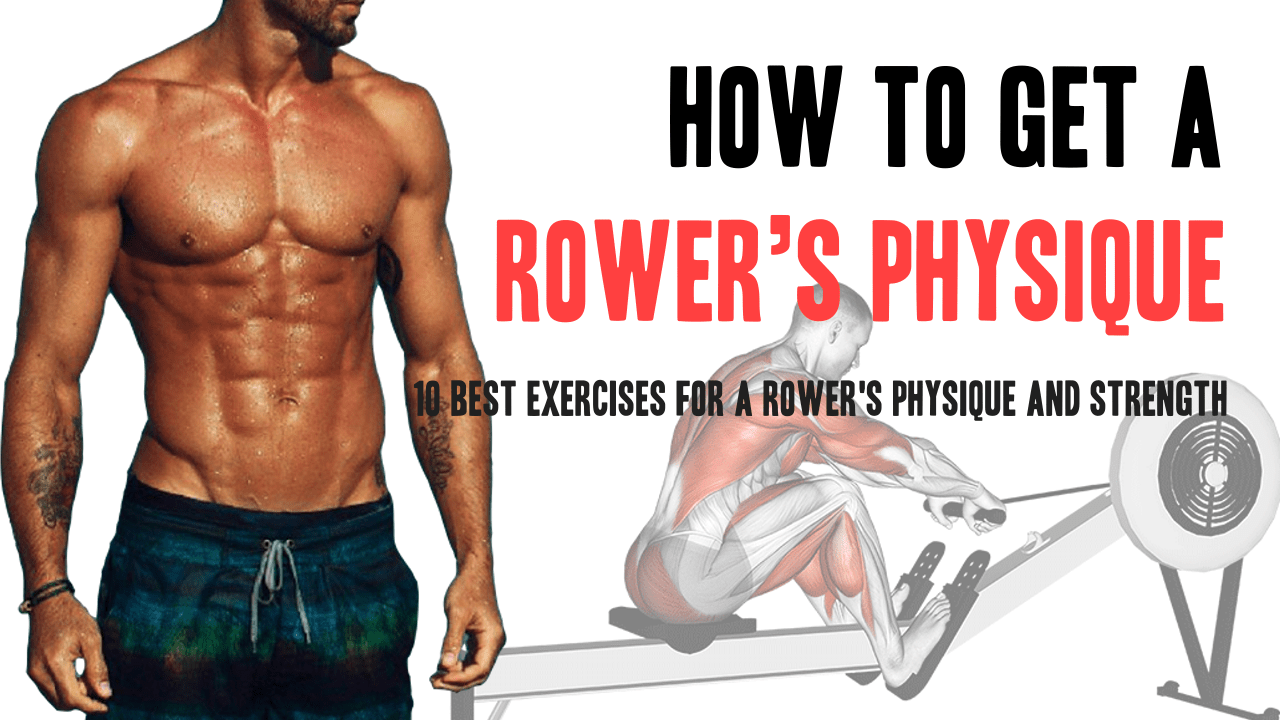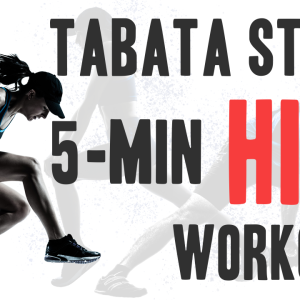Contents
- Some key features of rower physics:
- Unveiling the Science Behind Rower Physics
- Best Training Methods to achieve rower physique and strength
- Strength Training Exercises for Rower physique and strength
- 1. Bent-Over Rows: Cultivating a Rock-Solid Back
- 2. Dumbbell Rows: Balancing the Scales of Strength
- 3. Barbell Squat: Propelling Power from Below
- 4. Bulgarian Split Squat Jump: Unleash Explosive Elegance
- 5. Romanian Deadlift: Forging a Resilient Foundation
- 6. Push Press: Elevating Your Upper Body Game
- 7. Kettlebell Swing: A Swirl of Power
- 8. Backward Medicine Ball Throw: Reverse Engineering Strength
- 9. Plank: The Core of It All
- 10. Side Plank Hip Lift: Finding Balance on the Waters
- 3×5 Basic Strength Training for Beginners
A rowers physique is typically characterized by a combination of strength, endurance, and lean muscle development. Rowers, especially those who engage in competitive rowing, develop their bodies to perform optimally in the sport, which requires both power and stamina. If you’re aspiring to develop the robust and lean physique of a rower, incorporating specific exercises into your routine can help you attain your goal.
Some key features of rower physics:
- Upper Body Strength: Rowing primarily involves the muscles of the upper body, including the back, shoulders, and arms. Rowers develop significant upper body strength, particularly in the lats (latissimus dorsi), deltoids, trapezius, and biceps, which are essential for the pulling motion during rowing strokes.
- Core Strength: Core muscles, including the abdominals and lower back muscles, play a crucial role in maintaining stability and providing power during the rowing stroke. Rowers have well-developed core muscles to maintain balance and transmit power efficiently.
- Leg Strength: While rowing might seem like an upper body-dominant sport, leg strength is also essential. Rowers use their legs to push against the foot stretchers and generate power through the water. Strong quadriceps, hamstrings, and calf muscles contribute to an effective rowing stroke.
- Endurance and Cardiovascular Fitness: Rowing is an endurance sport that requires cardiovascular fitness. Rowers have high aerobic capacity to sustain long periods of exertion, making their cardiovascular system highly efficient.
- Lean Muscle Mass: Competitive rowers tend to have a lean and muscular physique due to the combination of aerobic and anaerobic exercise involved in rowing. The sport helps burn calories and build lean muscle mass, resulting in a toned and athletic appearance.
- Posture: Rowing demands proper posture for optimal performance and injury prevention. As a result, rowers often have good posture, with strong back and core muscles supporting a straight spine.
- Flexibility: Flexibility is important for achieving a full range of motion during the rowing stroke. Regular stretching and mobility work help rowers maintain flexibility in their shoulders, hips, and hamstrings.
- Balanced Muscle Development: Successful rowers strive for balanced muscle development throughout their bodies to ensure efficient and injury-free rowing strokes.
It’s important to note that the specific physique of a rower can vary based on factors such as their training approach, genetics, body type, and the type of rowing. Additionally, rowers often go through different training phases and techniques that may influence their physique over time.
Unveiling the Science Behind Rower Physics
Have you ever wondered what it takes to become a successful rower at the senior level? The answer lies not only in strength but in the meticulous training patterns that junior rowers follow.
A study conducted on young German male rowers, aged around 19, during a 37-week training season sheds light on the training patterns that contribute to their well-defined physiques and international success(1). The rowers were divided into groups based on their projected senior achievements. The study examined exercise types, intensity, and training frequency.
Exercise Distribution:
The study revealed that the junior rowers’ training time was divided among various exercises: approximately 52% comprised rowing, 23% resistance exercises, 17% alternative training methods, and 8% warm-up programs. This distribution underscores the importance of a balanced training regimen that encompasses both rowing-specific movements and complementary exercises to develop a comprehensive physique.
At the core of a rower’s training lies the very activity that defines their sport. Over half of their training time is dedicated to rowing itself. This endurance-based exercise not only refines their rowing technique but also builds the cardiovascular foundation that powers their performances.
In summary, if you want to have the physique and endurance of a rower, you have to play the game according to the rules and train like them.
Best Training Methods to achieve rower physique and strength
To ensure peak performance, many rowers kick off their mornings with activities that enhance flexibility, mobility, and mental focus. This might involve yoga, dynamic stretches, or breathing exercises to oxygenate their bodies.
Rowing involves both steady-state cardio and high-intensity intervals. These sessions focus on perfecting rowing technique while building endurance and strength. The rhythmic, repetitive motion of rowing provides an effective cardiovascular workout while engaging the entire body.
Rowing Machine Trainings

Here’s how to do rowing machine trainings:
Workout 1: 30/30-for-30 system
This approach involves performing exercises in a circuit with a specific interval pattern: 30 seconds of exercise followed by 30 seconds of rest, repeated for a total of 30 minutes. This type of circuit training is an effective way to combine cardiovascular conditioning with muscular endurance and can be adapted to various exercises and fitness levels.
| Exercise | Work / Rest | Time | Resistance | Effort: |
|---|---|---|---|---|
| Rowing | 30/30 seconds | 30 min | Moderate | Maximum |
After completing the circuit, spend 5-10 minutes performing static stretches for the major muscle groups you worked during the workout. This helps to improve flexibility and promote recovery.
This method of circuit training can be quite demanding, so it’s important to tailor it to your fitness level and gradually work your way up. Don’t hesitate to modify the exercises further or take longer rests if needed. Over time, as your strength and stamina increase, you can gradually make the exercises more challenging by increasing the intensity or trying more advanced variations.
Here’s a great video showing how it’s done.
Workout 2: Circuit Training
Choose a variety of exercises that target different muscle groups to create a well-rounded workout. You can use bodyweight exercises, resistance bands, dumbbells, or other equipment based on your preferences and availability.
Rowing machine sprints provide both cardiovascular endurance and a full-body workout, helping you develop the stamina and lean muscle mass characteristic of a rowers physique. Exercises like squats, deadlifts, bent-over rows, and pull-ups target the muscles essential for powerful rowing strokes. Core-focused exercises, planks, and Russian twists contribute to balance and stance, which are key factors in rowing efficiency. Change up the exercises in your circuit to target different muscle groups and keep the workout engaging.
- Choose a set of exercises that target different muscle groups. For example, you could include bodyweight exercises like push-ups, squats, lunges, burpees, jumping jacks, mountain climbers, or planks.
- Set up a timer or use a clock with a second hand to keep track of the intervals.
- Perform the first exercise at high intensity for 30 seconds.
- Rest for 30 seconds.
- Move on to the next exercise and repeat the pattern until you’ve completed all the exercises in your circuit.
- Repeat the circuit for a total of 30 minutes (or adjust the time as needed).
Example: Push pull leg combination
Warm-up: Begin with a 5 minute warm-up at a low to moderate intensity to gradually increase your heart rate and prepare your muscles for the sprints.
| For 30 min |
|---|
| Rowing 30 seconds |
| REST |
| Bench Press 30 seconds |
| REST |
| Squat 30 seconds |
Cool Down: Finish with a 5-10 minute cool-down that includes stretches for the major muscle groups you worked during the circuit.
Strength Training Exercises for Rower physique and strength
This is where strength exercises step onto the stage, playing a pivotal role in shaping a rower into a force to be reckoned with. Whether you’re a novice or a seasoned rower, integrating these exercises into your routine is a commitment to becoming the best version of yourself – both on and off the water.
1. Bent-Over Rows: Cultivating a Rock-Solid Back

With every pull, you’re not just lifting weight – you’re crafting a physique that embodies power, balance, and grace. Bent-over Row targets all back muscles, helping to improve posture and stabilize the muscles used during rowing. A stronger upper back can enhance the rowing stroke by providing better stability and power during the pull phase.
2. Dumbbell Rows: Balancing the Scales of Strength
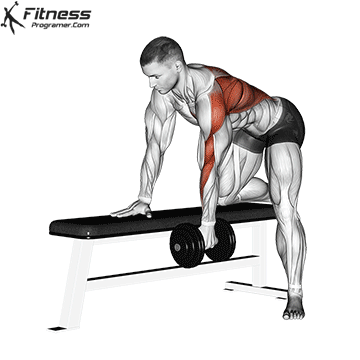
Just as each oar contributes to the boat’s forward momentum, each side of your body needs to pull its weight. Dumbbell Rows are your ticket to equilibrium. By addressing potential muscle imbalances between your left and right sides, you’re not only promoting a more symmetrical physique but also optimizing your rowing efficiency.
3. Barbell Squat: Propelling Power from Below
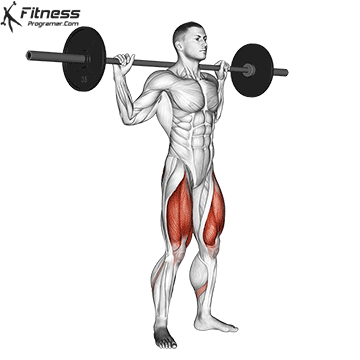
Rowing isn’t just about upper body strength; it’s a symphony of coordinated effort. Imagine your lower body as the anchor of this symphony, with Barbell Squats as the conductor. These full-body exercises sculpt your quadriceps, hamstrings, and glutes—the powerhouses propelling you forward with every stroke.
4. Bulgarian Split Squat Jump: Unleash Explosive Elegance
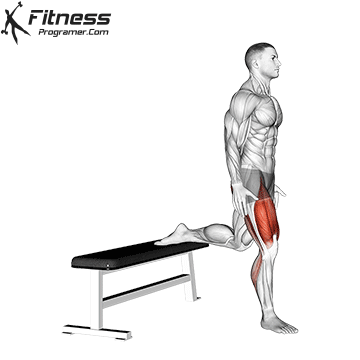
Rowing is about controlled power. The Bulgarian split squat jump brings explosive power into your training routine. As you jump, you mimic the drive phase of rowing, engaging your glutes and quads intensely. This exercise hones your ability to generate rapid bursts of power, akin to the vigorous strokes needed for a strong finish.
5. Romanian Deadlift: Forging a Resilient Foundation
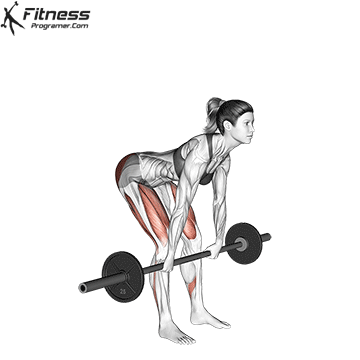
Every oarstroke relies on a solid foundation, just as every rower leans on their posterior chain for stability and strength. Romanian Deadlifts hone in on this foundation, targeting the hamstrings, glutes, and lower back. A fortified posterior chain keeps your boat on an even keel, enhancing your rowing prowess.
6. Push Press: Elevating Your Upper Body Game
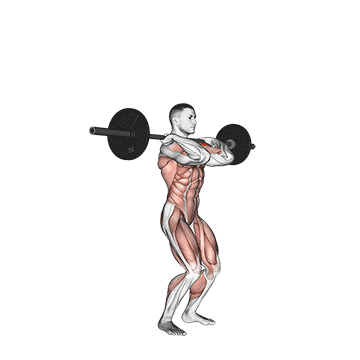
As your oars carve through the water, your upper body orchestrates the rhythm. Push Presses take center stage here, spotlighting your shoulders, triceps, and upper back. These muscles become your crescendo, harmonizing the delicate balance between power and finesse in each stroke.
7. Kettlebell Swing: A Swirl of Power
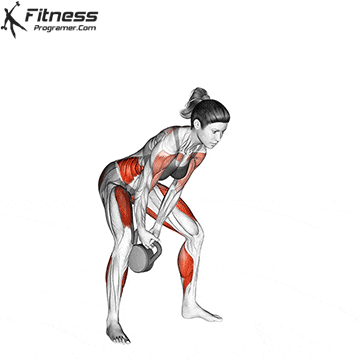
Picture the way a rower’s oar propels the boat forward—a rhythmic yet powerful movement. Kettlebell Swings mimic this elegant force, activating your hips, glutes, and lower back. These explosive moves provide the kinetic energy you need to amplify your rowing performance.
8. Backward Medicine Ball Throw: Reverse Engineering Strength
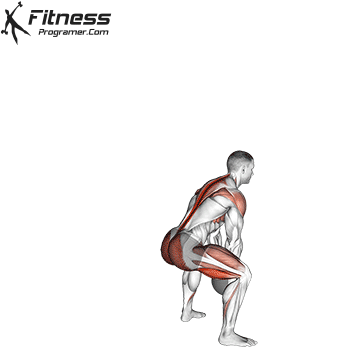
In rowing, sometimes it’s the backward motion that drives the whole experience. Backward Medicine Ball Throws mirror this concept, creating a symmetrical strengthening effect. As you launch the medicine ball, you’re training your muscles to excel in reverse, contributing to a balanced and potent rowing technique.
9. Plank: The Core of It All
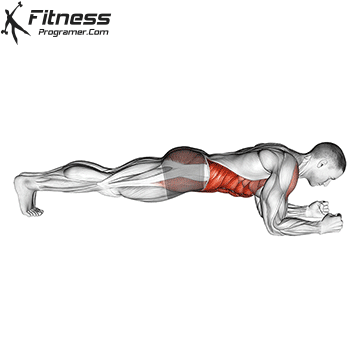
Think of a rower’s core as the keystone of a bridge. Planks reinforce this keystone, building a robust core that stabilizes your body through the rhythmic ebb and flow of rowing. A strong core ensures your movements remain fluid and efficient, propelling you toward victory.
10. Side Plank Hip Lift: Finding Balance on the Waters
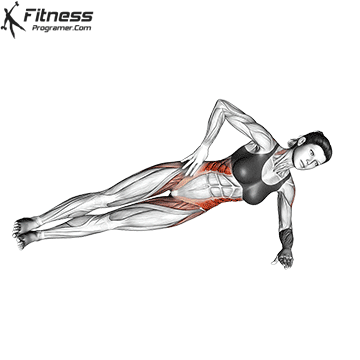
As a rower, maintaining equilibrium is paramount. Side Plank Hip Lifts target your obliques and lateral hip muscles, nurturing the side-to-side stability essential in rowing. By engaging these muscles, you’re ensuring that every stroke is a testament to your balance and control.
3×5 Basic Strength Training for Beginners
Here’s a basic 3×5 strength training program suitable for beginners. This program focuses on compound exercises that target major muscle groups and promote overall strength development. For more information on 3×5 strength training, click here.
In summary
A rowers physique is the result of dedicated training and a holistic approach to fitness. By incorporating exercises that emphasize upper body strength, core stability, leg power, and cardiovascular endurance, you can sculpt a body that not only looks the part but also possesses the functional capabilities of a seasoned rower. Remember to tailor your routine to your fitness level and gradually increase the intensity as you progress towards your goals.
References:
Guellich A., Seiler S., Emrich E. (2009). Training methods and intensity distribution of young world-class rowers. Int. J. sports physiology Perform. 4, 448–460. 10.1123/ijspp.4.4.448 – DOI – PubMed
Investigating the Effects of Typical Rowing Strength Training Practices on Strength and Power Development and 2,000 m Rowing Performance J Hum Kinet. 2016 Apr 1; PMID: 28149354

